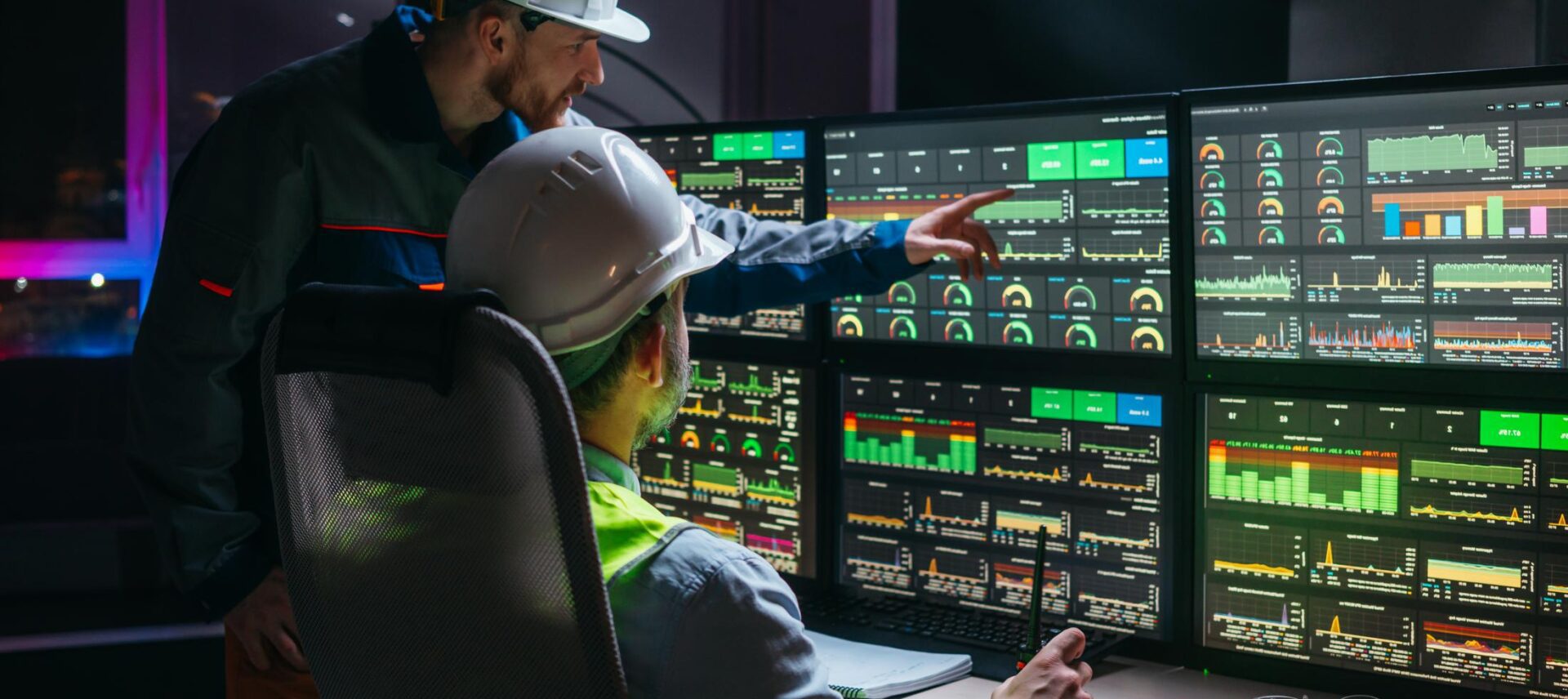News & Insights
SCADA cybersecurity: fortifying industrial control systems
As industrial control systems become more interconnected, the imperative for robust cybersecurity within SCADA systems has never been more critical. This article delves into strategies that fortify these essential systems against evolving threats, safeguarding the backbone of our industrial infrastructure.

Supervisory control and data acquisition (SCADA) systems orchestrate the flow of information and control across large networks of machinery and equipment. These operator systems, designed for high efficiency and reliability interfacing with equipment, have become the backbone of utilities, manufacturing, and critical infrastructure globally.
The cyber-physical nature of SCADA systems means that a breach or failure not only risks data loss but can lead to tangible, often catastrophic, real-world consequences. From halting production lines to compromising water treatment facilities, the ripple effects of these incidents underscore the criticality of robust cybersecurity measures. This article delves into the multifaceted approach required to safeguard these indispensable systems, laying the groundwork for a secure and resilient industrial future. Through a comprehensive exploration of vulnerabilities and strategies, we aim to equip stakeholders with the knowledge and tools to protect the industrial infrastructure that powers our world.
What is the threat landscape for SCADA?
Unlike traditional IT systems where endpoints are usually personal computing devices used by people, SCADA systems interface directly with the physical components of industrial environments: machines, sensors, and control units. This fundamental difference not only shapes the nature of potential threats but also underscores the unique challenges in securing these systems.
Here are the elements of the threat landscape:
Challenges with physical endpoints. The machinery and equipment that physically drive industrial processes are endpoints that often operate in environments that can be remote, exposed, and inherently more challenging to monitor and secure. It isn’t possible to simply install 3rd party software to protect or monitor these devices. There are limitations based on what is supplied by the manufacturers so reliance is on monitoring at the network rather than the device level.
Direct impact on physical processes. A compromised IT system might lead to data loss or financial theft, which are serious yet often recoverable scenarios. However, a breach in a SCADA system can cause immediate physical damage: shutting down power grids, causing malfunctions in water treatment facilities, or halting production lines. The stakes are tangibly higher, with public safety, environmental health, and critical infrastructure resilience on the line.
24/7 operation. SCADA systems operate continuously, supporting critical infrastructure and essential services that cannot afford interruptions. Consequently, performing routine maintenance, applying security patches, or implementing system upgrades requires meticulous planning and often needs to be executed without shutting down the system. This operational requirement introduces significant challenges in maintaining up-to-date cybersecurity measures as it limits the opportunities for straightforward fixes and updates that are more easily applied in less critical IT environments.
Exploitable vulnerabilities. Many SCADA systems were designed and implemented before cybersecurity became a critical concern, with legacy systems particularly vulnerable due to outdated protocols and lack of encryption. Older systems paired with the push towards integrating SCADA systems with corporate IT networks (and Internet) for efficiency and data analysis introduces new vectors for attack. These vulnerabilities range from unpatched software and insecure protocols to insufficient network segmentation.
Targeted attacks. The critical nature of the services provided by SCADA systems makes them an attractive target for sophisticated threat actors, including state-sponsored groups and terrorist organizations. These actors often have the resources and motivation to exploit any vulnerability, aiming for maximum disruption or geopolitical leverage.
Recent incidents highlight the vulnerability landscape of SCADA systems. For example, the ransomware attack on the Colonial Pipeline and the attack on the Pinellas County water treatment plant showed the potential for cyberattacks to disrupt essential services. These case studies serve as stark reminders of the vulnerabilities inherent in SCADA systems and the necessity of robust cybersecurity measures.

Core frameworks of SCADA cybersecurity
Navigating the complex landscape of SCADA cybersecurity requires a solid foundation built on proven frameworks and methodologies. These core frameworks not only offer a blueprint for securing critical infrastructure but also provide a structured approach to managing and mitigating cybersecurity risks.
Segregating into distinct layers: the Purdue model
The Purdue model is particularly significant in the context of cybersecurity for industrial control systems. Officially known as the Purdue Enterprise Reference Architecture (PERA), the model facilitates a clear separation between enterprise-level functions (such as corporate IT networks) and operations-level functions (such as manufacturing and production processes). This separation provides both operational efficiency and cybersecurity, including the following layers:
Level 0 – Physical process. This is the lowest level and consists of the physical machinery and processes being controlled, such as sensors, actuators, and other field devices.
Level 1 – Basic control. This level includes devices that directly control physical processes such as programmable logic controllers (PLCs).
Level 2 – Area supervisory control. This layer involves supervisory control systems, including SCADA systems, which monitor and manage the basic control devices.
Level 3 – Site operations. This level focuses on operations management, integrating control systems across different areas of the site for production scheduling, batch management, and more.
Level 4 – Enterprise management. This level connects the operational environment to the business side of the enterprise, including Enterprise Resource Planning (ERP) systems and other corporate management functions.
Level 5 – Enterprise network. Though not included in all interpretations of the Purdue model, this level represents the wider enterprise network, encompassing internet access and external communications.
The Purdue model provides a universal language that facilitates better communication and understanding among various stakeholders, including engineers, IT professionals, and cybersecurity experts.
Structured approach to cyber resilience: NIST Cybersecurity Framework
The National Institute of Standards and Technology (NIST) Cybersecurity Framework is a voluntary framework primarily intended for critical infrastructure organizations to manage and mitigate cybersecurity risk. Incorporating the NIST framework into SCADA systems’ cybersecurity strategies significantly bolsters their defenses against cyberthreats. This comprehensive set of recommendations serves as a blueprint for identifying vulnerabilities, implementing robust protective measures, continuously monitoring for threats, and swiftly responding to and recovering from incidents. By aligning SCADA security practices with the NIST framework, organizations can ensure a systematic, structured approach to safeguarding these critical systems against the evolving landscape of cyber risks.
Cross-layer security: ISA/IEC 62443
ISA/IEC 62443 is a series of standards developed by the International Society of Automation (ISA) together with the International Electrotechnical Commission (IEC) that focuses on industrial automation and control systems security. It provides a structured framework to address and mitigate current and future security vulnerabilities in industrial automation and control systems. The standards within ISA/IEC 62443 are designed to provide guidance across various aspects from how to secure industrial communication networks to how to manage the security of industrial automation and control system components.

Real-life strategies for fortifying SCADA systems (and where companies get hung up)
Real-life strategies for strengthening SCADA systems often stumble at the implementation stage. The initial step of auditing to identify vulnerabilities is clear, but moving to mitigation and ongoing monitoring proves challenging for many organizations. Common hurdles include complex technical solutions, limited resources, disruption concerns, and a gap in cybersecurity expertise.
A comprehensive managed program with a trusted partner that is focused on both identifying vulnerabilities and building a robust defense mechanism is crucial to bridge this gap. Key components of such a program include:
- Create standard alignment. To establish a strong foundation, adopt and adhere to key cybersecurity frameworks like the NIST Cybersecurity Framework and ISA/IEC 62443.
- Develop a plan and implement security measures. Implementing network segmentation, access control, and deploying security systems like firewalls and intrusion detection/prevention systems requires careful scheduling and planning to minimize disruption to operations.
- Develop a plan for maintenance and testing, then execute. Changes in complex systems are rarely plug-and-play. Testing is necessary to maintain secure configurations and manage regular updates.
- Physical security. Combine cyber and physical security efforts to protect infrastructure. Monitor and control physical access.
- Documentation. Keep clear, easily accessible documentation for ongoing security management, including asset maintenance contacts.
- Policies and procedures. Develop, document, and communicate cybersecurity policies to ensure they are integrated into the organizational culture and practices.
- Education and training. Educate employees to ensure policies are widely understood and enforced.
- Vendor risk management. Evaluate and manage risks from third-party vendors and service providers.
- Simulation exercises. Conduct training exercises in a controlled environment to prepare for real incident recovery and enhance response capabilities.
- Continuous monitoring. Provide ongoing support in managing cybersecurity measures that extends beyond the audit to include mitigation and proactive monitoring.
Taking a holistic program approach not only addresses immediate vulnerabilities but also establishes a framework for sustained cybersecurity resilience, ensuring organizations can navigate the complexities of SCADA system protection effectively over the long term.
How Salas O’Brien can help
At Salas O’Brien, our approach to industrial cybersecurity centers on empowerment. We offer more than just a plan; we provide the expertise and support necessary to execute it successfully. By refining policies, delivering hands-on training, and managing programs, we transform the complexity of cybersecurity into clear, actionable strategies.
This comprehensive support ensures that organizations move beyond mere awareness of their vulnerabilities to achieve robust, resilient defenses against cyberthreats. Salas O’Brien can guide you every step of the way, securing your operations against today’s challenges and preparing you for tomorrow’s. Contact us at [email protected].
For media inquiries on this article, reach out to Stacy Lake, Director of Corporate Communications

John Glenski, CPM
John Glenski is a leader in digital transformation in the industrial sector with a demonstrated history of providing data-driven outcomes for the world’s largest manufacturers. John works collaboratively with internal and external partners to deliver innovative solutions for smart manufacturing (automation, material handling, and data/information solutions) with a focus on sustainable applications. John serves as a Principal & Senior Director of Automation & Digital at Salas O’Brien. Contact him at [email protected].

Dave Jennings, PE, CISA
Dave Jennings is an industrial cybersecurity consultant who works closely with clients to improve and innovate their industrial controls systems (ICS). His main optimization areas of focus are: SCADA controls and visualization, ICS networking, cybersecurity, and data collection and reporting. Dave provides consulting and audits. He serves as an Associate Vice President at Salas O’Brien. Contact him at [email protected].

Stel Valavanis
Stel Valavanis is the CEO at onShore Security (a trusted collaborator with Salas O’Brien) with deep expertise in managed security. Stel has 40 years’ experience ranging from software development and network design to cybersecurity. Stel is well known for his creative business mind and specializes in finding innovative solutions to truly challenging problems. Contact him at: [email protected].